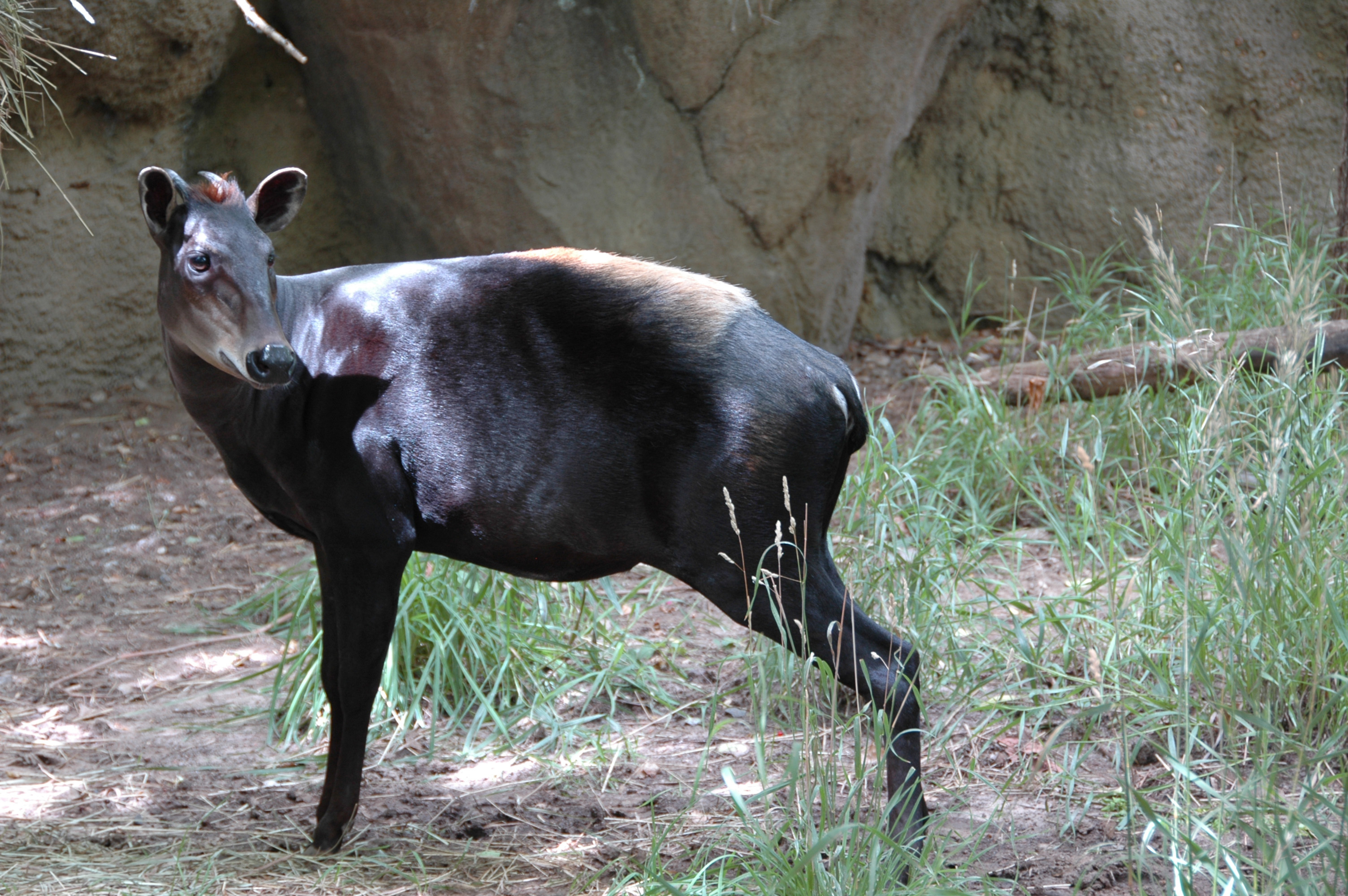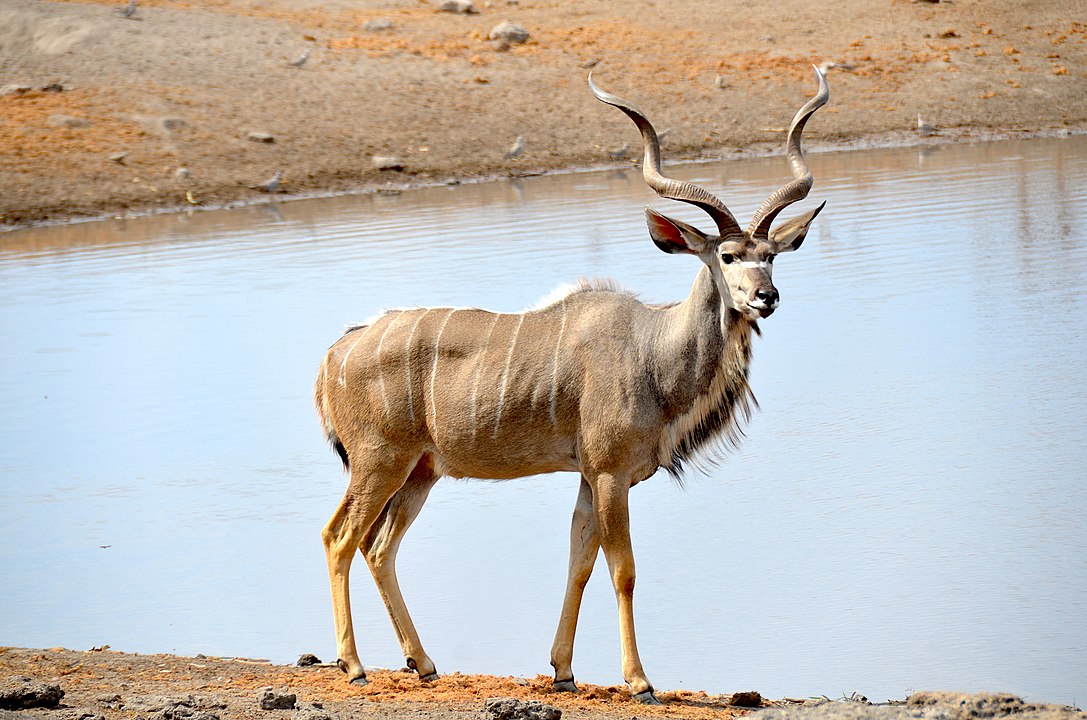Zambezian Evergreen Dry Forests
The ecoregion’s land area is provided in units of 1,000 hectares. The conservation target is the Global Safety Net (GSN1) area for the given ecoregion. The protection level indicates the percentage of the GSN goal that is currently protected on a scale of 0-10. N/A means data is not available at this time.
Bioregion: Greater African Subequatorial Savannas & Mixed Woodlands (AT11)
Realm: Afrotropics
Ecoregion Size (1000 ha):
3,177
Ecoregion ID:
33
Conservation Target:
22%
Protection Level:
9
States: Zambia, Angola
The dense evergreen forest, dominated by the tree genus Cryptosepalum, known locally as “mavunda," forms a relatively continuous canopy at 15-18 meters (49-59 ft) in height. This is the largest area of tropical evergreen forest outside the equatorial zone. The understory is a discontinuous shrub layer comprising a tangle of shrubs and lianas, which is home to the yellow-backed duiker, blue duiker, red river hog, and greater kudu.

The flagship species of the Zambezian Evergreen Dry Forests ecoregion is the yellow-backed duiker (Cephalophus silvicultor). Image Credit: Charles Gibson, Dreamstine.
The ecoregion’s forests are found at 1,100 to 1,200 meters (3,608-3,937 ft) elevation in the higher rainfall areas of the Kalahari sands of northern Barotseland in western Zambia and extend into Angola. The two main blocks of Cryptosepalum forest are found to the north and south of the Kabompo River, which forms a part of the Upper Zambezi River catchment and drains the ecoregion.
To the west, this ecoregion adjoins Loudetia simplex-dominated grassland, where seasonal waterlogging suppresses tree growth, whereas to the southwest, it is bordered by the Barotse floodplain. To the north, east, and west, the ecoregion grades into miombo woodlands. Soil depth, moisture storage, and the presence of calcium and hardpans determine the composition of the vegetation cover. The ecoregion has a tropical climate, with temperatures ranging from a maximum of 28° to 30°C (82-86°F) and a minimum of 7° to 8°C (45-46°F). Mean annual precipitation ranges from 800 to 1,200 millimeters (31-47 in). Three climatic seasons can be distinguished: a hot dry season (August to October), a hot wet season (November to April), and a cool dry season (May to July).
The ecoregion does not contain endemic plant species and is distinguished more by its structure than its floral composition. Vertebrate species richness is low, and none of the known mammals are endemic to the habitat, which shares most of its fauna with the surrounding Brachystegia woodland or the Guineo-Congolian forest. The only near-endemic mammal is Rosevear's striped grass mouse, known from two localities in the Zambezi District and Solwezi.

Greater kudu (Tragelaphus strepsiceros). Image Credit: Wiki Creative Commons.
The forests provide habitat for larger mammals such as yellow-backed duiker, blue duiker, red river hog, and greater kudu, as well as cover for the elephant and buffalo from the Kabompo-Mwinilunga areas. There is a relatively rich avifauna; fifteen bird species are representative of these forests, including the olive long-tailed cuckoo, Ross’s turaco, yellow-rumped tinkerbird, and Cabanis’s greenbul. Several birds coexist with closely related species, for example, chinspot batis, Boulton's batis, and golden-tailed woodpecker, suggesting that Cryptosepalum forest fragments were isolated during drier climates and have more recently combined.
Although the ecoregion is relatively small and fragmented due to edaphic and climatic determinants, much of the habitat is still in a natural, undisturbed state. The West Lunga National Park falls within this ecoregion. It is surrounded in the east, north, and west by game management areas, which provide protection to the larger mammals in the form of hunting restrictions and also maintain the habitat. Forest reserves include Ndembo, Lukwakwa, Dongwe, and Nabowa in Zambia. The Angolan portion of the ecoregion does not include any protected areas.
This ecoregion is threatened by deforestation and forest degradation, unsustainable land uses, and large fires. Many of these threats in game management areas and protected areas in the past have been due to open-access exploitation and uncoordinated resource management policies. However, there have been substantial efforts to strengthen protected area management. The southern parts of the forests are utilized for fuelwood and timber by the inhabitants of the nearly-treeless Barotse floodplain, but the impacts seem limited to a few localized parts of the forest margins.
Poaching is a general threat to wildlife in southwestern Zambia, even within protected areas, including organized wildlife crime for ivory and bushmeat. However, there have been significant efforts to curb this threat. For example, a UNDP project has been working with rural community groups, including reformed poachers, to adopt alternative livelihoods and reduce their reliance on poaching. Another threat to the forests is fire, particularly the highly intolerant tree species Cryptosepalum.
The priority conservation actions for the next decade
1) Effectively enforce hunting concession agreements.
2) Empower communities to benefit more from the protected area network, for example, through developing tourism.
3) Assess the representativeness of the protected area network and establish further protected areas.
-
-
1. Lindsey, P.A., Nyirenda, V.R., Barnes, J.I., Becker, M.S., McRobb, R., Tambling, C.J., Taylor, W.A., Watson, F.G. and t’Sas-Rolfes, M. 2014. Underperformance of African protected area networks and the case for new conservation models: insights from Zambia. PLoS one. 9(5), p.e94109.
2. Timberlake, J. and Chidumayo, E. 2011. Miombo ecoregion vision report. Bulawayo, Zimbabwe: Biodiversity Foudation for Africa.
3. Ministry of Lands, Natural Resources and Environmental Protection. 2015. Zambia’s second national biodiversity strategy and action plan (NBSAP -2) 2015-2025. Zambia: Government of the Republic of Zambia. -
Cite this page: Zambezian Evergreen Dry Forests. Ecoregion Snapshots: Descriptive Abstracts of the Terrestrial Ecoregions of the World, 2021. Developed by One Earth and RESOLVE. https://www.oneearth.org/ecoregions/zambezian-evergreen-dry-forests/
-




